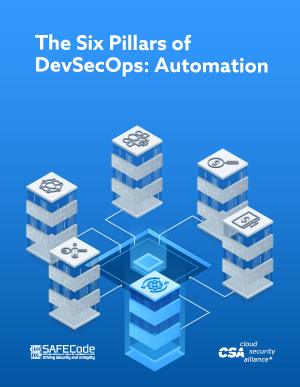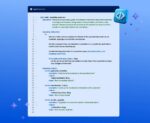
The Six Pillars of DevSecOps: Automation paper published by the Cloud Security Alliance provides a holistic framework for facilitating security automation within DevSecOps as well as best practices.
“It’s vital that today’s DevOps teams be agile, able to address user requirements dynamically, release features incrementally, and deliver at a faster pace than their predecessors and do it all without sacrificing security. Security controls can’t be successfully integrated without automated security capabilities that allow for timely and meaningful feedback. By adopting even modest automated security capabilities entire classes of risk can potentially be eliminated,” said Sean Heide, a research analyst at Cloud Security Alliance.
The document shows what types of triggers and checkpoints should occur in the delivery pipelines as well as how to balance resources in conjunction with deliverability.
Additional details are available here.
dotData Stream released
dotData Stream is a containerized AI model for real-time prediction that is easily deployable in the cloud for ML orchestration or at the edge for intelligent IoT.
dotData Stream performs real-time predictions using AI/ML models developed on the dotData Platform, including feature transformation such as one-hot encoding, missing value imputation, data normalization, and outlier filter, according to the company.
“With the dotData GUI, AI/ML development becomes a five-minute operation, requiring neither significant data science experience nor SQL/Python/R coding,” dotData wrote in a post that contains additional details.
Dynatrace announces AI observability for Kubernetes
The unified cloud-native application and infrastructure observability improves cross-team collaboration and accelerates digital transformation, according to Dynatrace.
With this release, Dynatrace customers can instantly understand the availability, health, and resource utilization of Kubernetes infrastructure.
“Bringing infrastructure, application, and site reliability engineering (SRE) teams together, with everyone using the same data, makes it faster and easier to optimize applications and infrastructure, resolve issues, and accelerate successful digital transformations,” Dynatrace said in a post
Google announces new device types for Smart Home
The new device types complement the original set that was released earlier this year.
“By implementing these types and traits on your entertainment devices, you can enable users to fully access device and media controls from any Assistant surface,” Google wrote in a blog post.
The new device types for Smart Home include Audio-video receiver, Streaming box, Streaming stick, Soundbar, Streaming soundbar, and Speaker.






